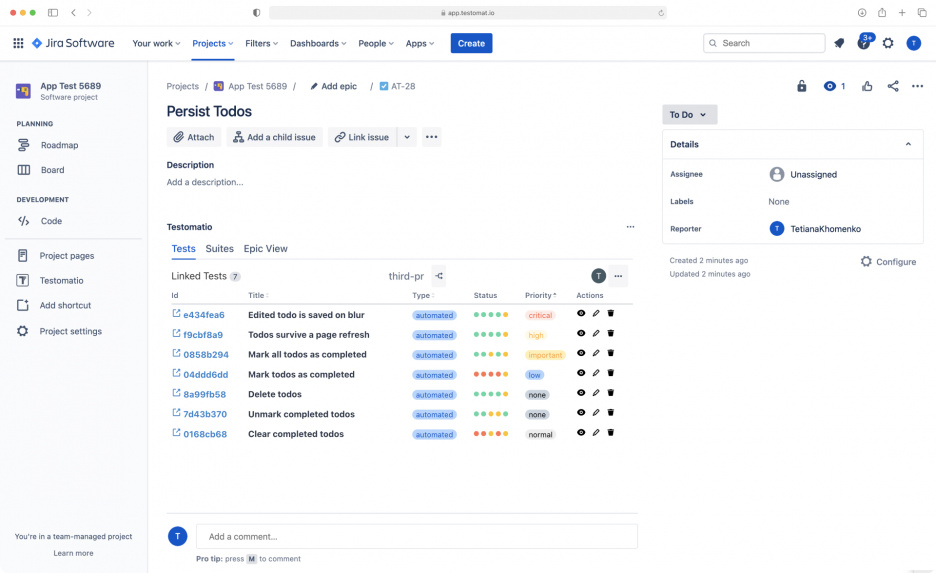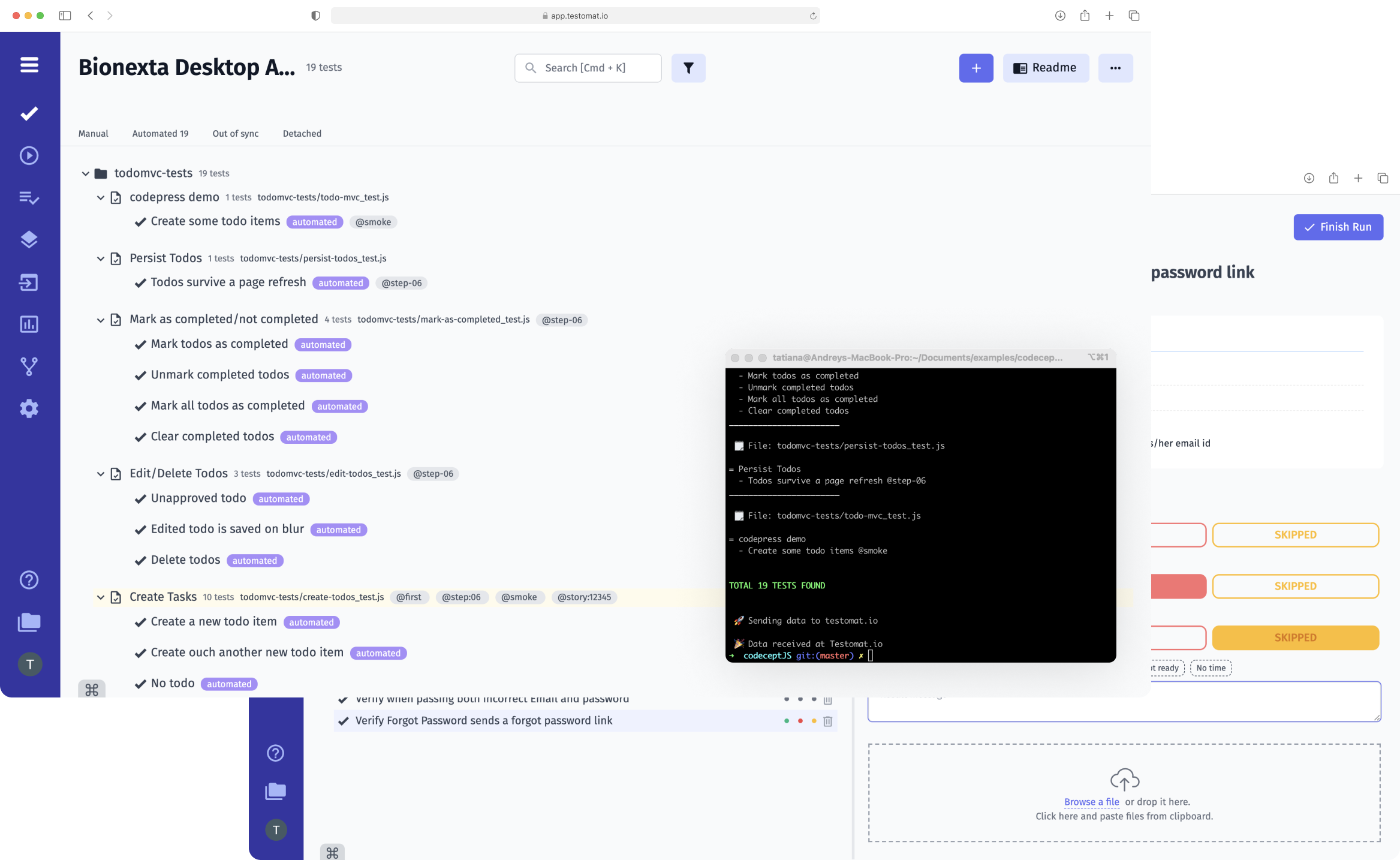
Nowadays, Agile teams face more and more new challenges during SDLC. Apart from product development of test management, our team successfully provides software testing services and independent consulting, so we know their needs firsthand. As a result, we developed a unique Jira extension to help. You may meet all its capabilities by following the Jira integration link.
One of the Jira test management features is business requirements linking. The requirement traceability ensures that your tests are covering all the required functionality of the application. This helps stakeholders mitigate risks that software features establish users’ expectations and work properly before a release. Moreover, this traceability is crucial in user story testing, ensuring that each user story is adequately tested, thus aligning the software’s functionality with the end-user’s actual needs and scenarios.
Note, the Jira plugin supports bidirectional interconnections, thus you can track your user stories from your test project in the test management app directly as well.
How to work with User stories BA, PO and PM
They describe the requirements and then testers link test cases to the user story. Sometimes QA Analysts do it in the form of test cases and also link user stories to test cases.
Test management allows you to do:
- Link test cases count per user story
- Link test cases list per user story
*The last using many-to-many relationship, user story contains hierarchical list of test suites and child test cases and vice versa.
After then they are able to monitor directly from Jira how many functional requirements are covered by tests and plan team workflows according to testing priorities easily. Sometimes it is required to get regression tests coverage report, acceptance criteria report or requirements traceability matrix report for your user stories and other backlog items with Test Analytics measurements count metrics.
These all are possible directly from the Jira project management system, which means that the Business Analyst (BA), Project Manager (PM), Product Manager (PO) or other non-tech professional does not need to constantly switch to the testomat.io test management system – just go to Jira. Conversely, if the QA tester uses the TMS, they do not need to spend time logging into Jira to link the tests to the user stories.
You can control the execution of the project directly from Jira, namely:
- Evaluate progress on a new feature. Having created a new feature and a user story, you submit it for development and testing. Later you can view at what stage a certain feature is, making a conclusion about the progress of your Devs and QA engineers before release or sprint.
- View test statuses. You can access detailed information on how a new feature was tested and the test results. The Jira plugin allows you to see the number of tests and status (Failed, Passed, Skipped) of tests linked to particular user stories in per cent. And here immediately you can check which test cases manual which automated one, see test prioritization and assignments. In user story testing, this feature proves invaluable for tracking the effectiveness and coverage of tests associated with each user story.
- Select all or specific projects. If you need to find a specific project, use sorting by name. You can also view all linked projects at once.
- See unfixed bugs. Regarding mission-critical functionality, it’s a good idea to monitor issues regularly. If you find bugs that still need to be fixed, involve QA specialists in the work.
- Prioritize tests. By estimating how many requirements are covered by tests, you can properly prioritize them. That is, determine the functionality that should be tested first.
- Run manual and automated tests manually or in CI\CD and check test results directly from Jira.
Thus, using User stories coverage functionality simplifies project management. Knowing which features are covered by tests allows you to plan the workflow: distribute new features to developers, assign QA specialists, and build relationships within the team. You can see the progress of tasks for a particular feature, as well as the overall results of your work.
Who else has access to User stories coverage?
Team members who are granted access to the test project can track project requirements with Jira test management.
Other test management features advantageous to Agile teams
- Importers by popular testing frameworks – if you have end-2-end tests, API or unit tests already implemented, import them easily, synchronize with your manual test cases and link them to business requirements. For instance, Cypress.io, WebdriverIO, Playwright, CodeceptJS, Cucumber automated tests etc.
- Real-time reporting – you get the report results after at least one test is completed: you don’t have to wait for all the tests to be finished. Data is provided in real-time in an intuitive format.
- Requirements traceability – this is an important feature for QA engineers, which allows them to create and describe requirements, as well as track them through all stages of the product lifecycle.
- BDD support – TMS supports BDD tests, which means that specialists without technical experience (business analysts, managers) can work on projects, including running tests.
- Agile Workflow – our test management tool focuses on a flexible Agile 3 Amigos approach to work organization and task scheduling. Simplify team collaboration and increase responsiveness to change.
